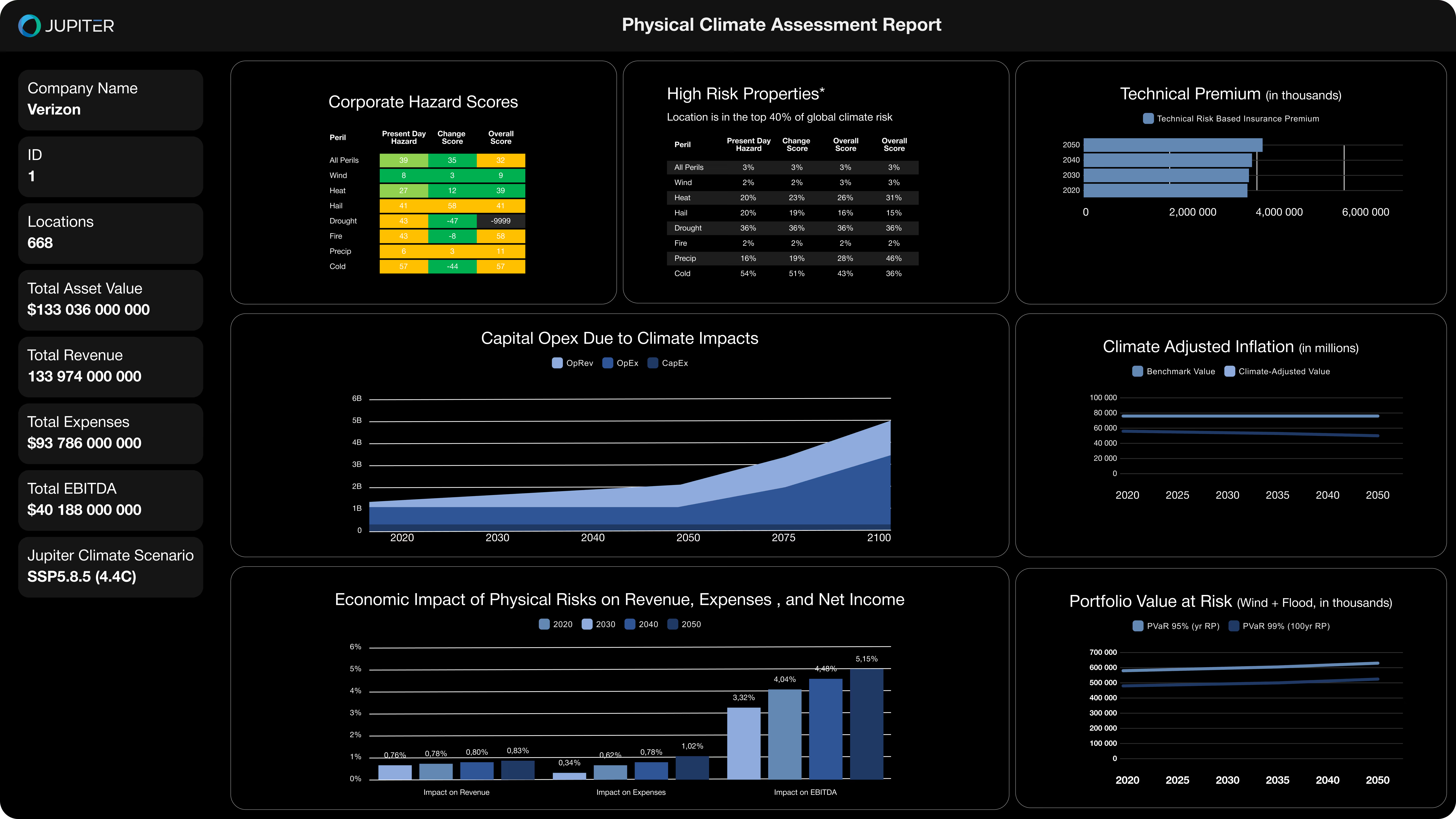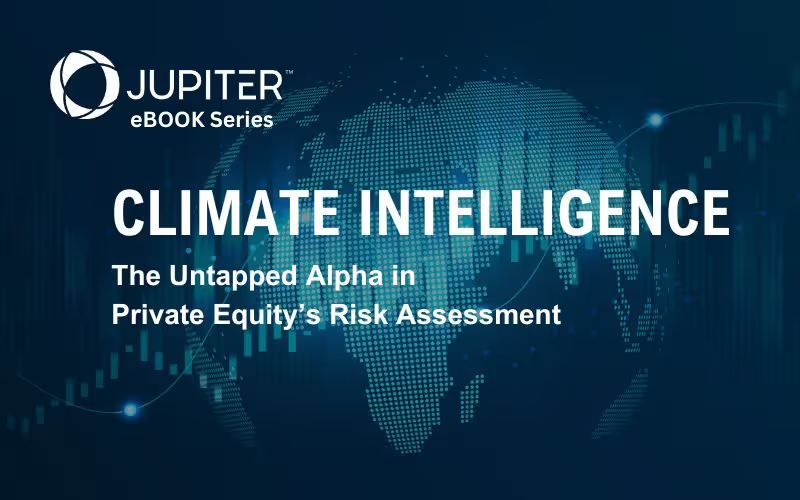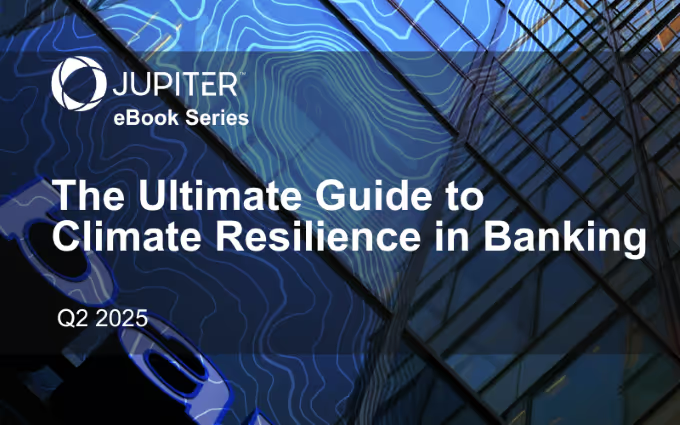Jupiter Entity Modeling

Financial institutions know climate risk matters. But when they look beyond physical assets to companies, counterparties, and securities, they often find fragmented tools and limited visibility into financial consequences.
Most models fail to link physical hazards with how capital is structured, priced and held, leaving blind spots in pricing, diligence, and capital strategy.
Jupiter Entity Modeling fills that gap. It connects climate science with financial systems, enabling institutions to evaluate risk across virtually any entity: corporate, structured, or capital market-based. With this clarity, firms can quantify exposure, simulate financial outcomes, and embed climate intelligence into credit, investment, and portfolio-level decisions.



Use case
Financial institutions know climate risk matters. But when they look beyond physical assets to companies, counterparties, and securities, they often find fragmented tools and limited visibility into financial consequences. Most models fail to link physical hazards with how capital is structured, priced and held, leaving blind spots in pricing, diligence, and capital strategy. Jupiter Entity Modeling fills that gap. It connects climate science with financial systems, enabling institutions to evaluate risk across virtually any entity: corporate, structured, or capital market-based. With this clarity, firms can quantify exposure, simulate financial outcomes, and embed climate intelligence into credit, investment, and portfolio-level decisions.
Financial institutions know climate risk matters. But when they look beyond physical assets to companies, counterparties, and securities, they often find fragmented tools and limited visibility into financial consequences.
Most models fail to link physical hazards with how capital is structured, priced and held, leaving blind spots in pricing, diligence, and capital strategy.
Jupiter Entity Modeling fills that gap. It connects climate science with financial systems, enabling institutions to evaluate risk across virtually any entity: corporate, structured, or capital market-based. With this clarity, firms can quantify exposure, simulate financial outcomes, and embed climate intelligence into credit, investment, and portfolio-level decisions.
A roadmap to climate risk disclosures
Stay informed on the latest regulatory developments and global trends. Jupiter experts continuously track climate risk regulations worldwide—check back regularly for the most up-to-date insights.

Use Cases
Evaluate portfolio companies and borrowers for climate vulnerability
Detect high-risk entities even when asset-level data is incomplete
Prioritize diligence or engagement based on exposure profiles
Screen potential investments, counterparties, or borrowers for climate-adjusted viability
Model entity-wide exposure and flag potential “hidden” risks
Ensure alignment with internal investment thresholds or credit risk tolerances
Identify business continuity risk due to site-level hazards (flood, heat, wildfire, etc.)
Assess probability of default or impairment linked to climate-related disruption
Enhance loan pricing and stress testing assumptions

[eBOOK] Climate Intelligence: The Untapped Alpha in Private Equity's Risk Assessment
Paired with a Jupiter expert that specializes in your industry, we will work together to assess your needs and determine the best-in-science physical climate risk analytics approach for your organization.
talk to an expert.webp)


%20tiny.avif)
.avif)

